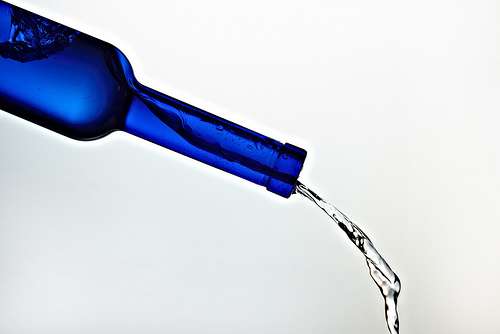Study confirms water quality in glass and plastic bottles

Bottled water sold in Spain is practically free of constituents given off by plastic packaging or glass bottle lids. They are only detected in some cases, albeit in quantities much lower than limits found harmful for health. This was revealed by the analysis of more than 130 types of mineral water by researchers at the Institute of Environmental Assessment and Water Research of the Spanish National Research Council (CSIC).
Plastic materials used in food packaging are made up of small molecules or monomers which, together with their additives, can migrate into the product during packaging manufacturing, filling or storage.
Now scientists at the Institute of Environmental Assessment and Water Research (IDAEA-CSIC) and the Oliver Rodés Laboratory have focused on those constituents which can be transmitted from the plastic or glass bottles to the water. More specifically, they have analysed five types of phthalates (esters of phthalic acid), diethylhexyl adipate (DEHA), octylphenol, nonylphenol and bisphenol A (BPA).
These substances are common in packaging manufacturing, but can have toxic effects on reproductive organs and the endocrine system if they exceed limits set by legislation on plastic materials in contact with food.
Researchers have analysed mineral water from 131 springs and three prepared drinking water from 94 brands sold in Spain. The samples were taken just after packaging in bottling plants and after having been stored for one year, to assess whether there had been any migration of plastic constituents or additives during this period. The results were published in the journal Food Chemistry.
"The conclusions of the study indicate that both the packaging, whether it be plastic or glass, and the bottled water are completely safe for health and comply with prevailing legislation," stresses the lead author, Silvia Lacorte, to SINC.
Out of a total of 6,516 values, only 5.6% tested positive. The most commonly appearing constituents were DEHP or di(2-ethylhexyl) phthalate, relating to the caps on glass bottles, and BPA, linked to polycarbonate packaging, a type of shapeable thermoplastic common in the industry.
However, the concentrations are insignificant and much lower than the maximum limits for total daily intake or TDI. For example, in the case of DEHP, 231 litres of water would have to be drunk per day to reach the limit set by legislation (0.05 mg/kg body weight/day) or 124 litres if dealing with BPA.
"Taking into account the concentration of the constituents and the daily consumption of bottled water, the possibility of developing health problems due to their ingestion is non-existent," insists Lacorte.
The researcher points out that the results "may be useful for bottling companies and lid and resin distributors who are continually improving their products to limit migration from the packaging and maintain the qualities of spring water."
More of an organoleptic issue than one of toxicity
"The migration of constituents sometimes creates an organoleptic problem, more so than toxicity, and is the reason why bottling companies are concerned first and foremost in using plastics that do not affect the taste for the consumer," she adds.
The analysis also reveals that polyethylene terephthalate (PET) plastic bottles with a high density polyethene lid, which the majority of water bottles on the Spanish market are, have low levels of plasticisers.
It has also been observed that the shape of the container does not affect water quality. Neither does storage time, given that the constituents detected in recently bottled samples were basically the same as those having spent a year in storage.
Only carbonated water can slightly increase migration processes, which in general are related to the kind of monomer or plastic material used to manufacture the packaging.
"Bottled water has often received criticism regarding plasticiser migration, but in reality it hardly happens at all, and if it does, now we know why, so we can improve its packaging," Lacorte points out, and then reiterates: "In Spain it may seem like a luxury to drink bottled water, but in many countries it is a necessity because there is no tap water, and in any case it must be safe and of quality."
More information: Albert Guart, Francisco Bono-Blay, Antonio Borrell, Silvia Lacorte. "Effect of bottling and storage on the migration of plastic constituents in Spanish bottled waters". Food Chemistry 156: 73–80, 2014.
Journal information: Food Chemistry
Provided by Plataforma SINC

















